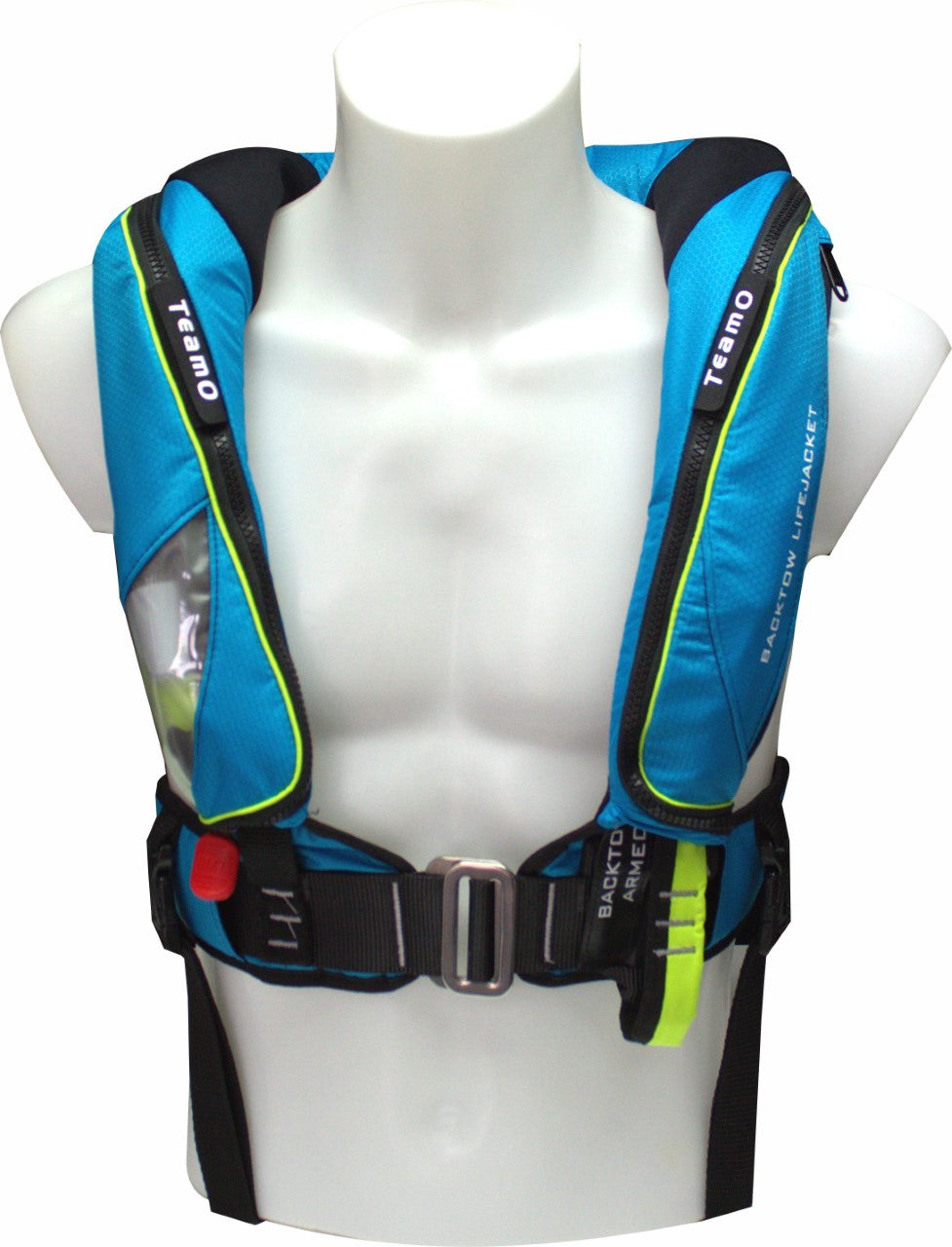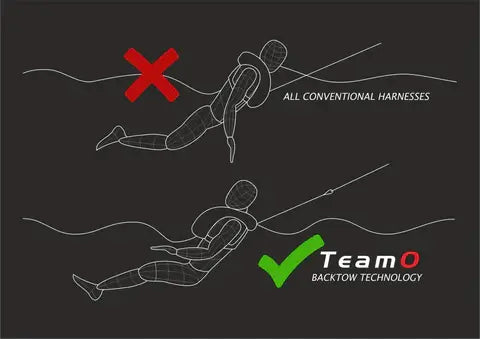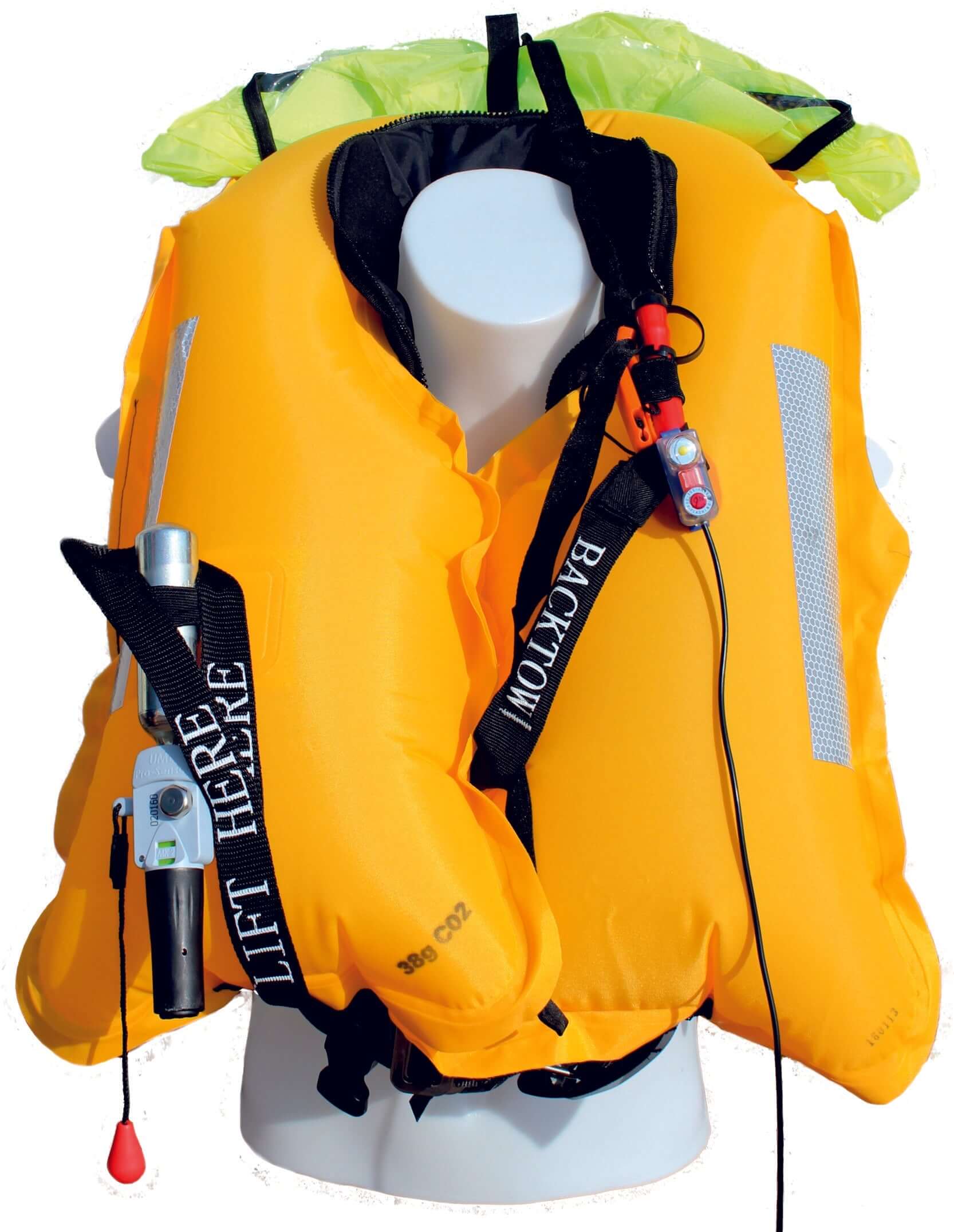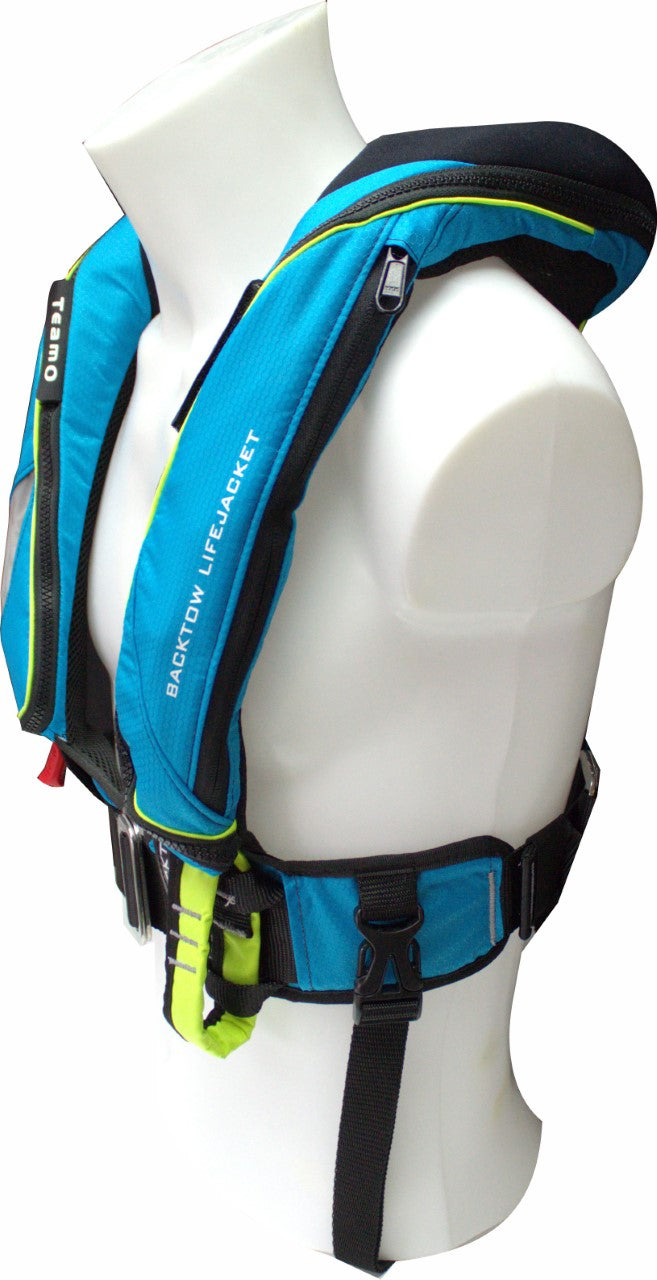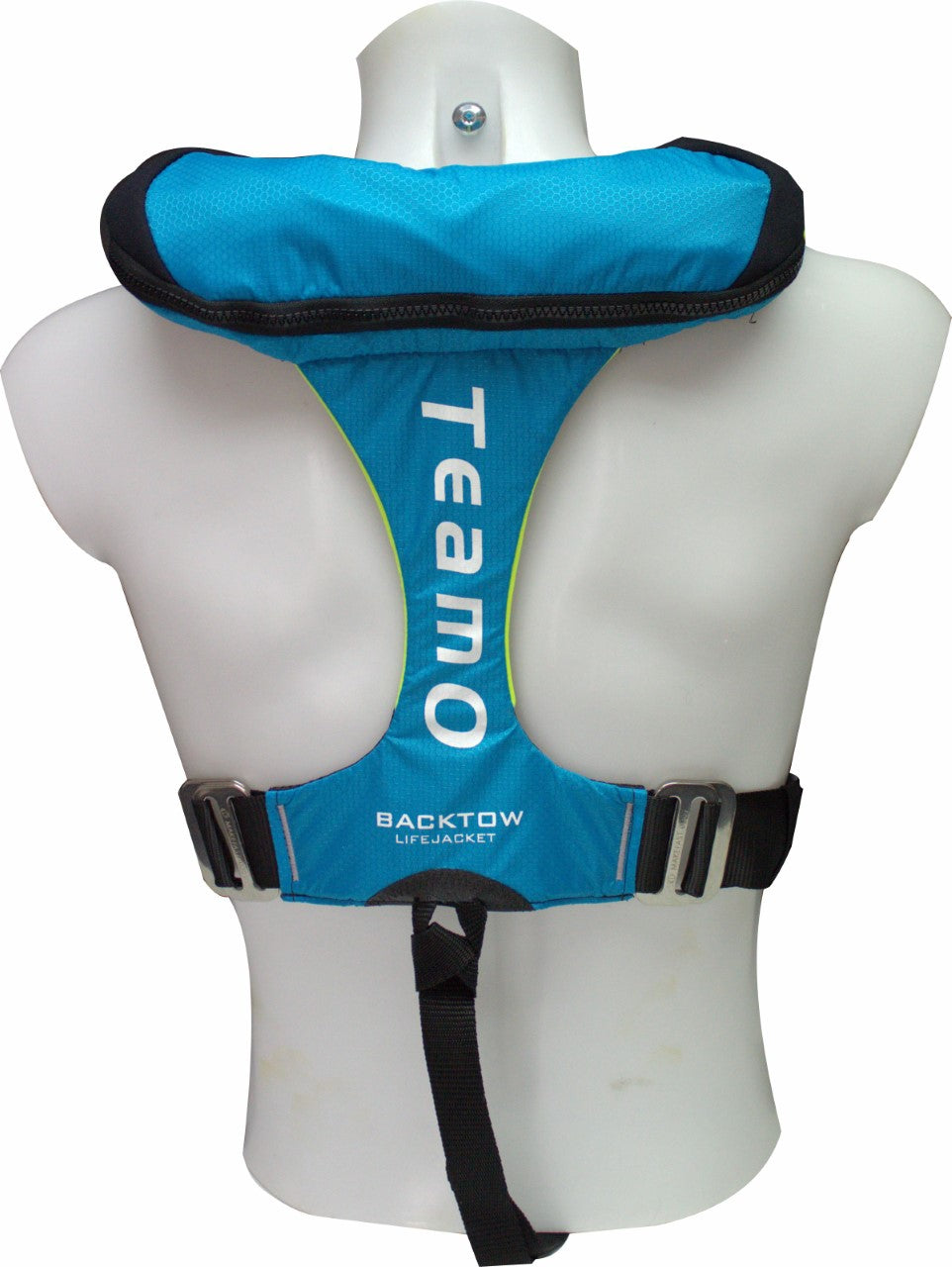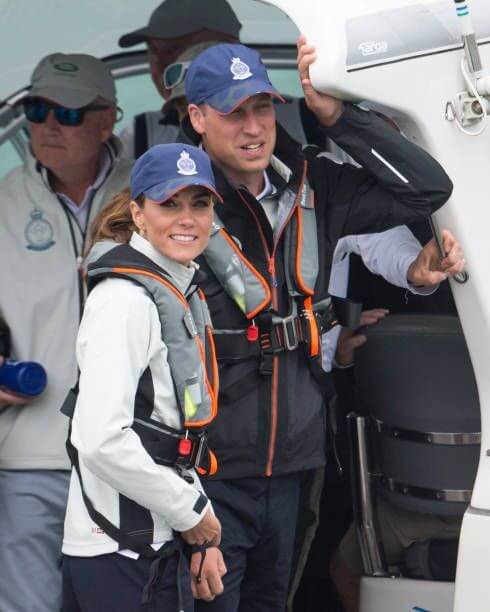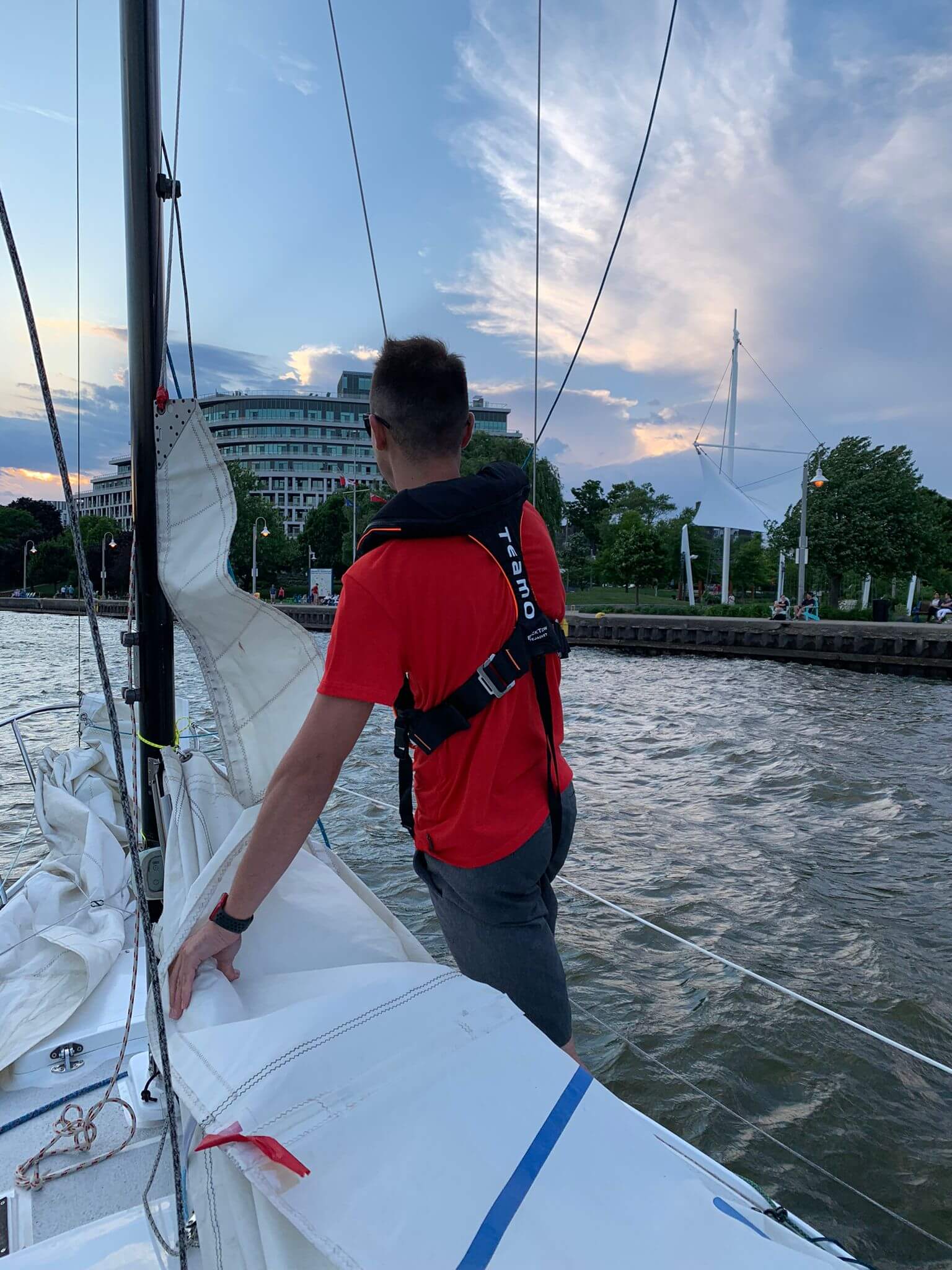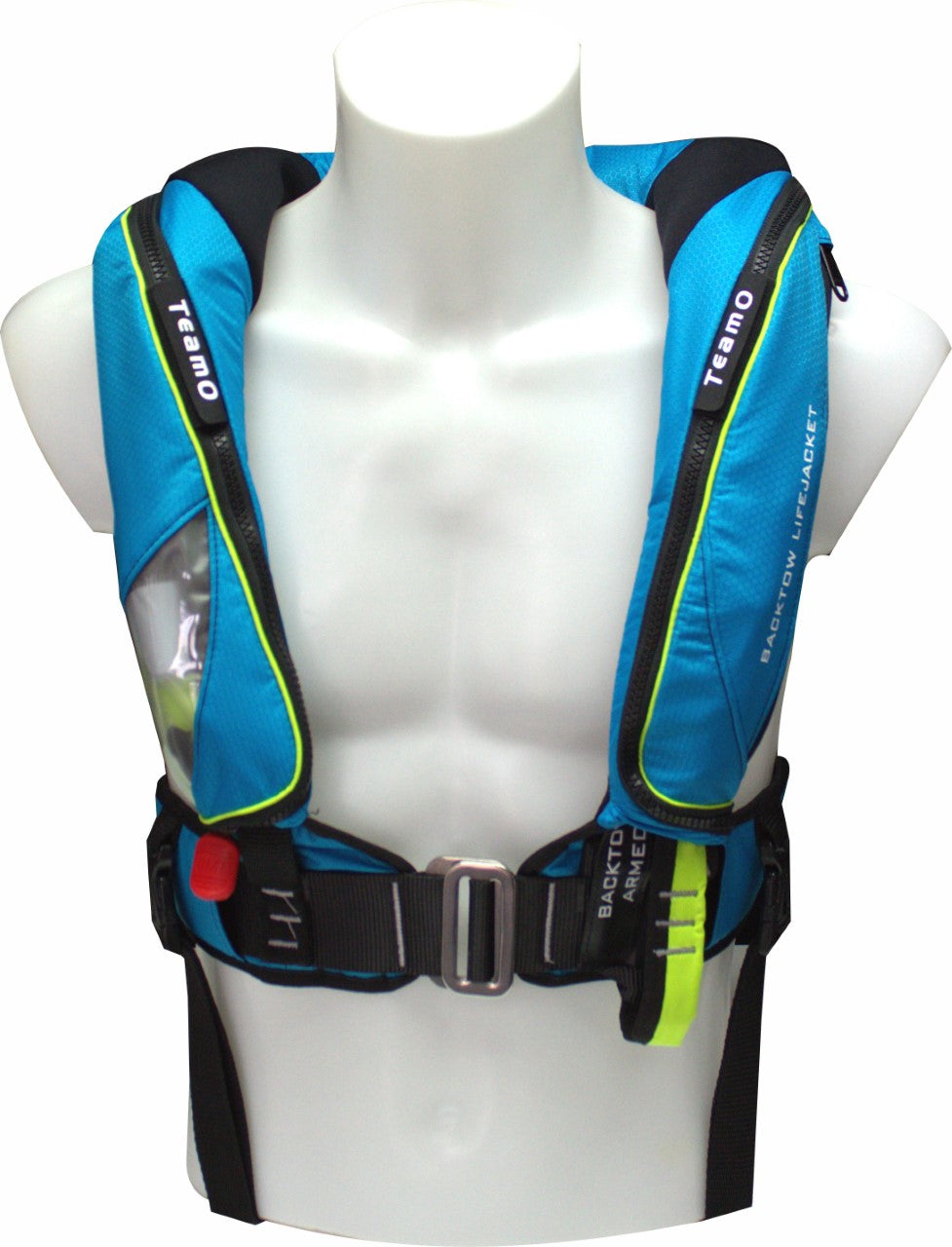
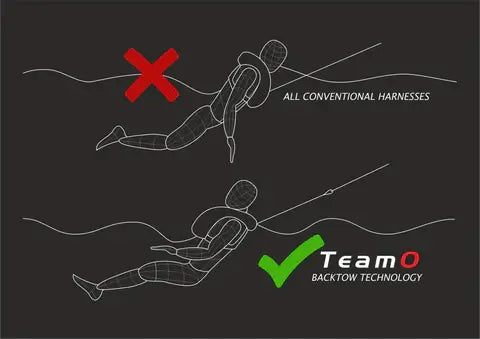
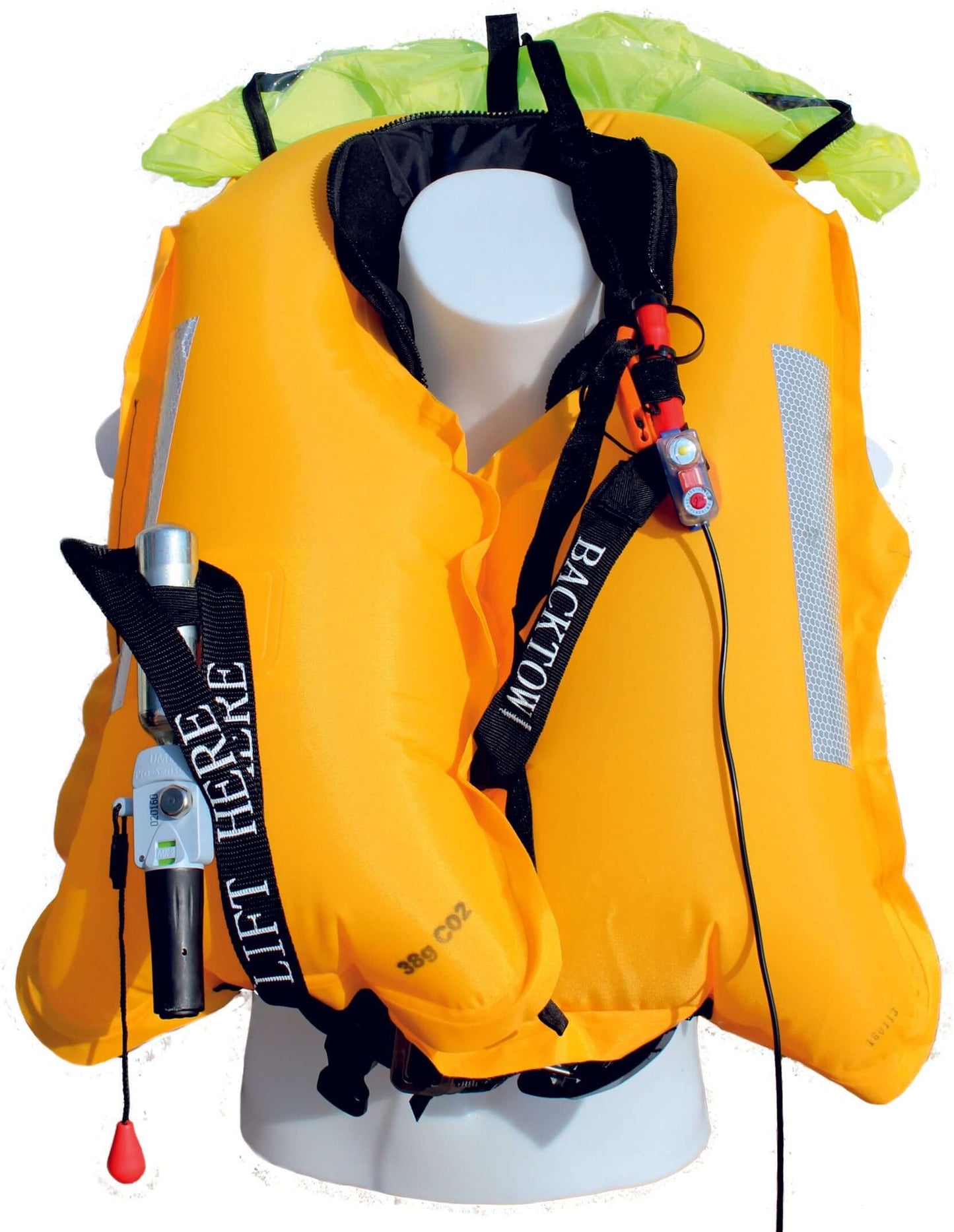
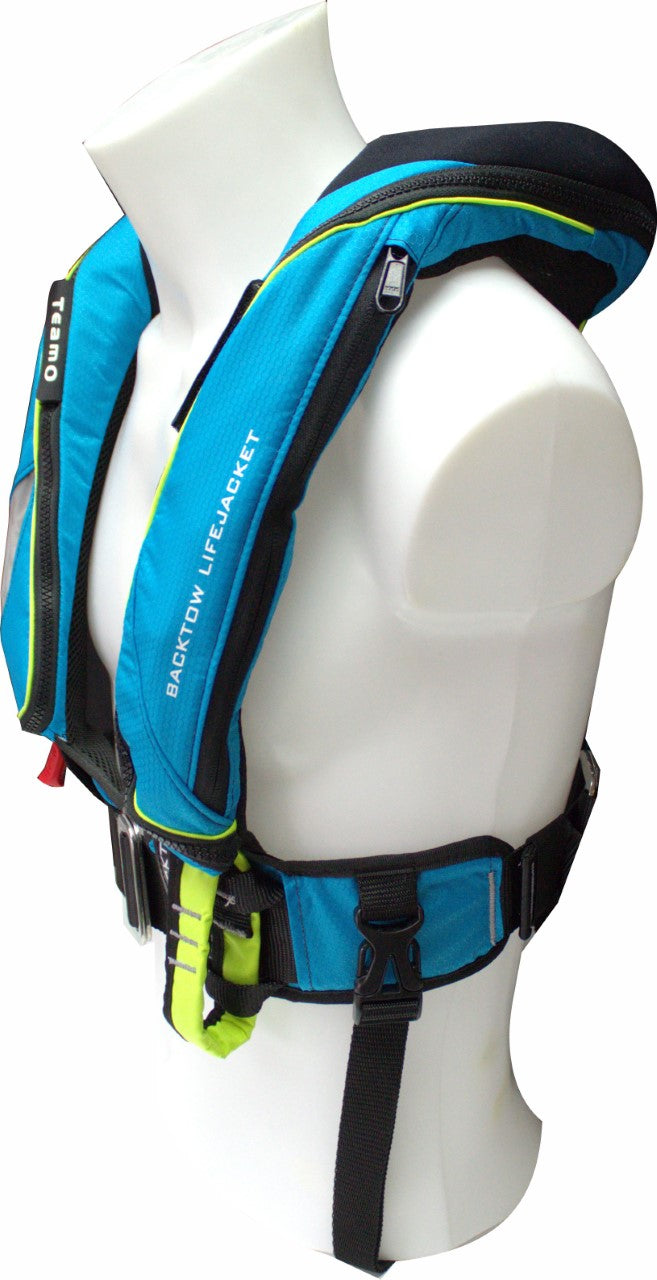
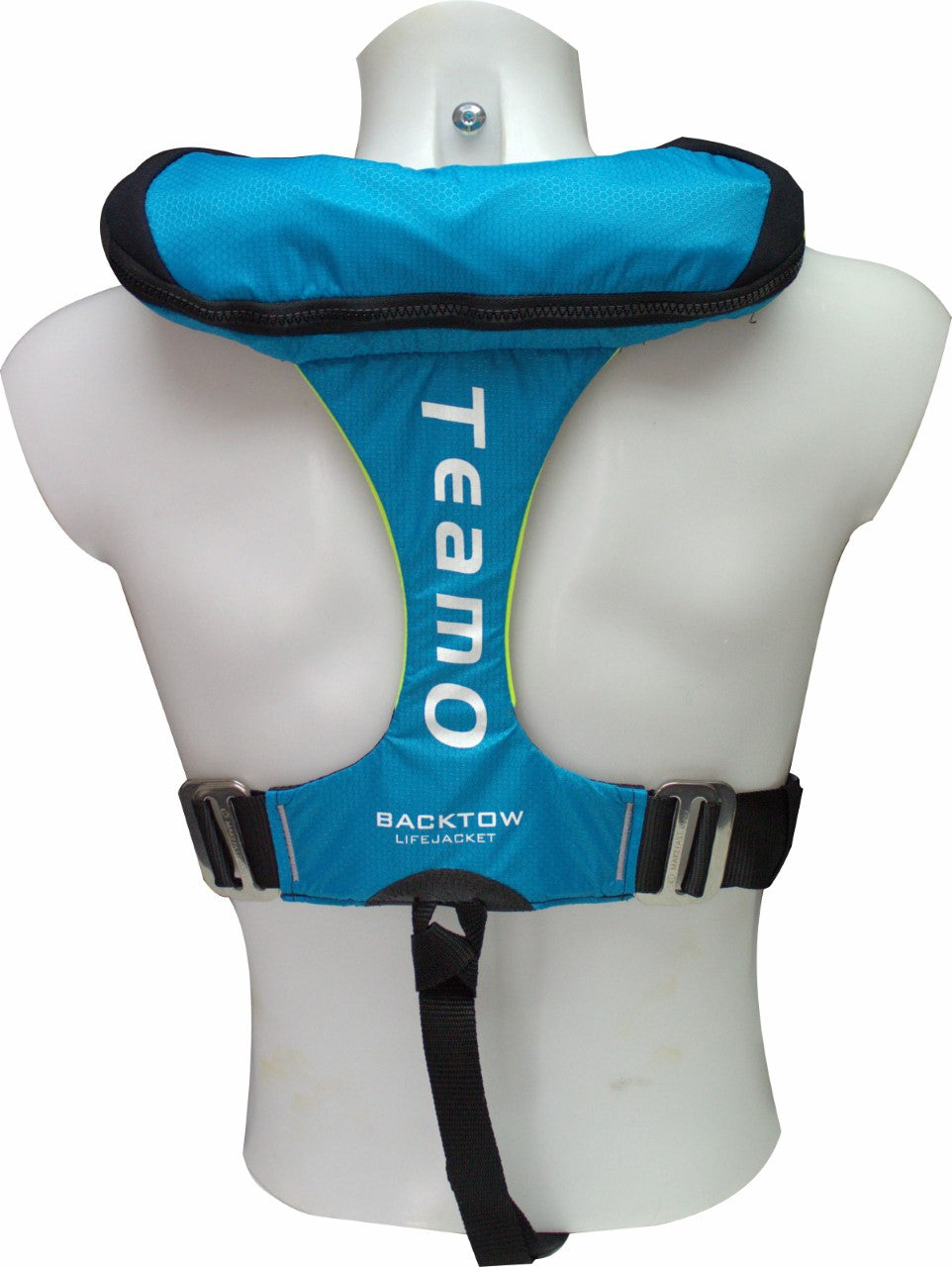
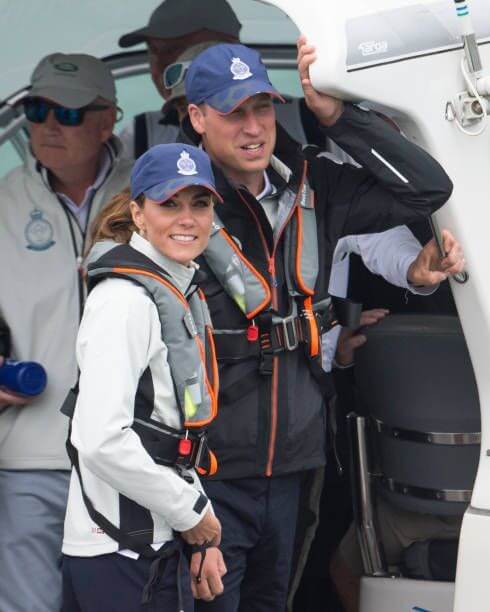
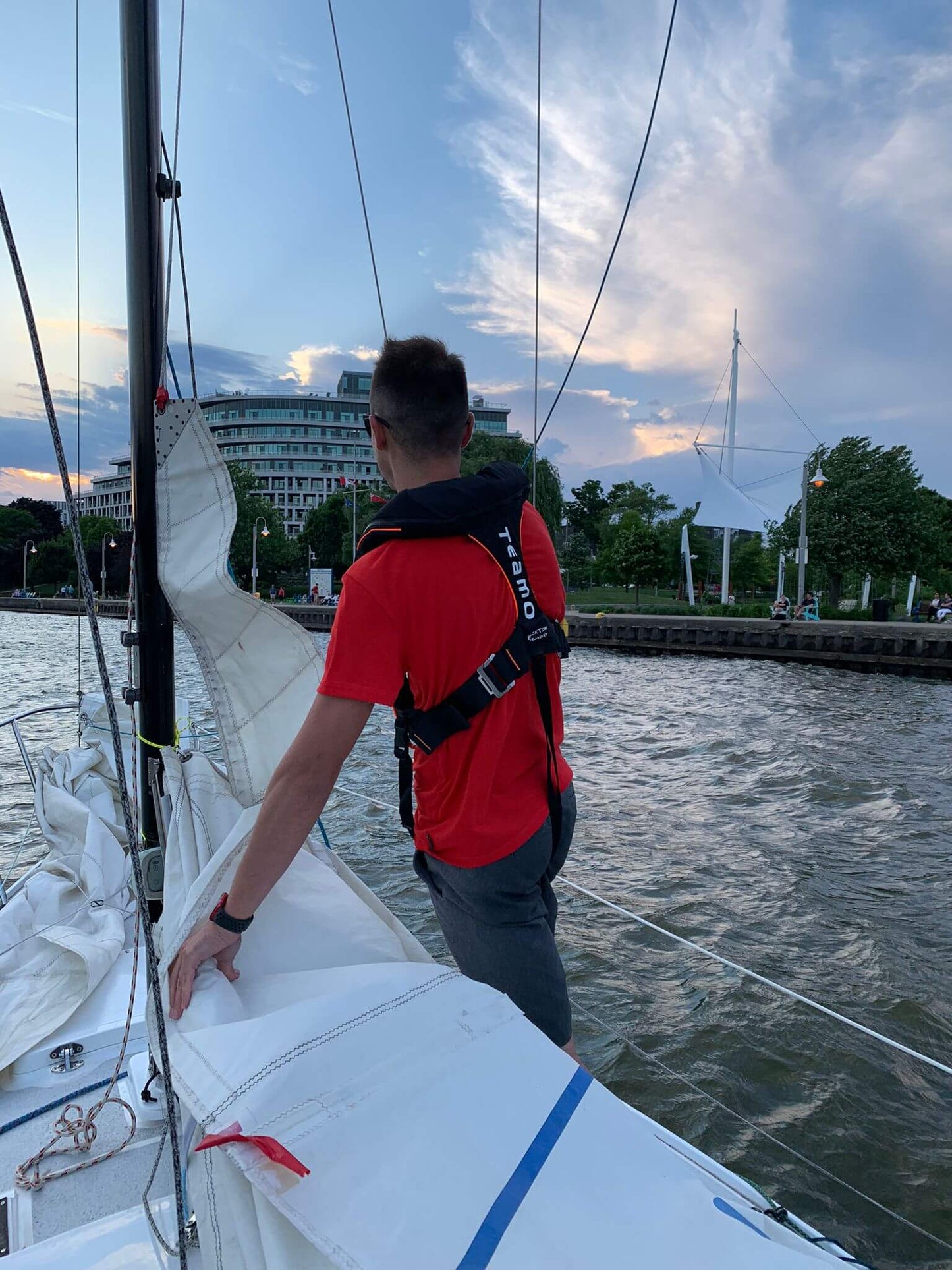
This page is longer than most — because your PFD (personal floatation device, aka "lifejacket") is one of the most important pieces of safety gear you’ll ever buy. We want you to understand why we believe TeamO is the best choice, and to clearly explain the options so you can choose with confidence.
TeamO PFDs have three critical safety advantages

You'll Actually Wear It!
Comfortable: lightweight, neck-friendly, and designed to fit a wide range of body shapes and sizes.

BackTow™ Technology
Keeps you face-up if you fall overboard while tethered, making rescue safer and reducing the risk of drowning.

Secure Crotch Straps
Prevent the PFD from pulling off over your head if towed — a major failure point in other inflatables.
-
The Details
Most PFDs have two big problems. First, they’re often uncomfortable enough that people take them off, leaving themselves unprotected. Second, if a tethered sailor goes overboard, the tether tows the person from the chest, keeping them face-down with no way to breathe. And that has led to tragic drownings caused by the very thing that was supposed to protect them. TeamO solves both problems.
Comfort
Let’s talk about comfort first. At a glance you may not notice the difference in cut, but you’ll feel it the moment you put it on. Check out the picture of the woman in the white shirt above. TeamO doesn’t ride on the back of your neck — it rests on your shoulders and upper back. That design makes it feel lighter and helps prevent the neck strain and headaches many sailors get from other PFDs.
But the cut isn’t the only difference. Most PFD instructions tell you to pull the straps until the vest is snug, but that often means chest pressure, digging at the neck, and chafing when you’re sweaty. And who wants to wear something “snug” on a hot day?
TeamO is built differently. Its integrated crotch straps keep the vest securely in place, so you don’t have to crank down the harness. Instead, it’s meant to be worn with a little room — enough to slip a fist between your chest and the band — making it more comfortable for women and men alike while still staying right where it should be.
It’s also one of the few PFDs with a truly wide size range — from very small sailors who struggle to find gear that fits, up to chest sizes of 56". That flexibility means you can wear it comfortably over foul weather gear, or adjust it down for a swimsuit or t-shirt. Whatever your build, it sits light and balanced so you’ll actually keep it on, whether you’re offshore in heavy weather or just daysailing close to home.
And because comfort and fit are so personal, every TeamO comes with a 30-day return policy. Try it on, make sure it feels right, and send it back if it doesn’t — as long as it’s still in as-new condition.
BackTow™ system
So, this is a PFD that you’ll actually wear. That’s a step in the right direction, but the real breakthrough is TeamO’s patented BackTow™ system — the only one of its kind in the world.
Here’s the danger: if you fall overboard while clipped on with a tether, the attachment point at your chest drags you face-down through the water. Until the boat fully stops, it can be impossible to get a breath of air. Until now, the only option was for the overboard person to release the tether and hope the boat could find them again. Otherwise, they’d drown before the boat stopped.
TeamO changes that. Once the vest inflates, a simple pull of the BackTow handle transfers the tether point from the front of the harness to the back. The wearer does need to be conscious and able to make that pull, but once activated it locks into place — you don’t need to keep holding it.
That single change flips you into a face-up position, allowing you to breathe and be towed safely until the boat can recover you. The BackTow strap also doubles as a strong lifting point, so even a smaller crewmember can use a winch to bring you back aboard. Combined with the crotch straps that prevent the vest from riding up, it transforms the odds should you go overboard.
-
Comfort and the BackTow are the big differences in the TeamO PFDs. But you’ll notice other little user-friendly touches in the design. For example, the tether attachment point is completely separate from the PFD buckle. That means you don’t have to detach and reattach your tether every time you put the PFD on or take it off — a small but meaningful convenience when you’re on a watch schedule or using the head.
You'll also notice that because the TeamO sits lower on your back and shoulders, it won’t knock off wide-brimmed hats — an important detail if you’re trying to stay sun-safe on the water.
-
Certification & Use in the U.S. & Canada
TeamO PFDs are made in the UK and meet the rigorous international ISO 12402-3 standard — a globally recognized benchmark for performance and safety. They have not been submitted for certification with the U.S. Coast Guard (USCG) or Transport Canada and thus don't carry their approvals. This isn’t because they were denied; the approvals simply haven’t been applied for at this stage.
What does that mean for you?
- In the U.S.: You can absolutely wear a TeamO while boating. The only requirement is that you also carry a USCG-approved lifejacket for each person on board. Even a very inexpensive orange “horse-collar” lifejacket will keep you legal.
- In Canada: The rules are similar. You may use and benefit from a high-quality ISO-certified PFD like the TeamO, as long as each person on board also has a Transport Canada–approved lifejacket or PFD available.
That way, you get the advanced comfort, fit, and lifesaving BackTow™ innovation of TeamO while staying fully compliant with local regulations.
-
Who It’s For
- Offshore and inshore sailors who sail tethered and want the added safety of BackTow™ technology.
- Cruisers who value comfort as much as safety, and want a PFD they’ll actually keep on all day.
- Anyone who struggles with fit — from XS to XXXL, both men and women.
The TeamO is not for: Children under 16, anyone under 80 lbs, personal watercraft use, or whitewater paddling. And unfortunately, TeamO doesn’t yet make a kids’ model.
Inflation System Options
TeamO PFDs use automatic inflators that activate when immersed in water. Older inflators had a reputation for going off in rain or heavy spray, but TeamO’s modern designs make accidental activation highly unlikely.
Re-Arm Kits: UML Mk5i, ProSensor Elite, and Hammar re-arm kits are widely available in many countries and can also be shipped internationally. Of course, we sell them for U.S. delivery. You may also see them under other brand names; just check the specifications to ensure compatibility with your PFD.
Instructions: Every re-arm kit includes clear, step-by-step directions for replacing the CO₂ cylinder and firing capsule.
Manual Activation: All TeamO inflators can also be activated manually at any time using the pull cord.
How It Works
Models Available On
UML Mk5i
Water must travel upward to dissolve a paper pellet, releasing the CO₂ cylinder.
Coastal
ProSensor Elite
Same upward-entry design as Mk5i, with green/red indicator tabs to confirm readiness.
Offshore & Ocean
Hammar Hydrostatic
Triggered by water pressure when fully submerged (~4 in). Virtually no chance of accidental inflation.
Offshore
Which Model is Right For You?
TeamO offers three models: the Coastal, the Offshore, and the Ocean. All three are the same size to wear when uninflated, and they share the same comfortable cut and patented BackTow™ system.
The difference is buoyancy and features. Choosing between the 170N (Coastal and Offshore) and 275N (Ocean) models is not about your body weight. The 170N bladder, which uses a 38g CO₂ cylinder, provides plenty of buoyancy for the majority of sailors — whether you’re coastal cruising, racing offshore for a weekend, or making overnight passages.
The Ocean’s 275N bladder, powered by a larger 60g CO₂ cylinder, is designed for more extreme situations: trans-ocean sailing, very heavy weather, or high-latitude cruising. That extra buoyancy is especially useful if you’re wearing heavy foul-weather gear or a survival suit, where trapped air can affect the self-righting capability of a smaller bladder.
Coastal
Offshore
Ocean
Comfort Design
BackTow System
Integrated Harness
Crotch Straps
27"-56" Chest
Spray Hood
Not included
SOLAS light
Not included; easy to add
Whistle
Buoyancy
38 lb.
38 lb.
60 lb.
3-Year Warranty
Best For
Coastal cruising, overnight sails
Offshore sailing, heavy-weather passages
Ocean crossings, extreme weather, high-latitude sailing
Our Recommendations
-
Choose smart: You’ll be well served by any TeamO model. The key is to be realistic about where you sail and the conditions you expect. Choose the model that matches your needs — there’s no reason to overbuy.
-
The Tether: TeamO’s Kru Triple Hook tether is the one we recommend. The central hook clips to your PFD, with two 1-meter legs ending in hooks. That shorter length may sound restrictive, but it’s an essential safety feature that keeps you far less likely to go overboard if you slip. And with two legs, you can tag-team clip as you move, so you’re never unclipped.
-
Add a Re-Arming Kit: Cylinders last 3–4 years, but if your PFD deploys, you’ll want to replace it immediately. Having the correct re-arming kit on hand keeps your PFD ready to go.
-
Buying more than one? Get different colors so you can tell them apart at a glance and avoid constant readjusting. If you REALLY want them all the same color, mark the cover with names using a permanent marker.
-
Add a Locator Beacon: For maximum safety, we strongly recommend installing a combined PLB/AIS/DSC device such as the Ocean Signal rescueME MOB1 or ACR AISLink inside your TeamO PFD. These units are designed to activate automatically when the lifejacket inflates, so rescue is underway within seconds.
Here’s how they protect you:
- Automatic activation: As soon as the PFD inflates in the water, the device turns on — no extra steps needed.
- Local alerting (AIS + DSC): Your exact position is transmitted by AIS to all nearby vessels, while a DSC distress call can trigger alarms on your boat and others with DSC-capable VHFs. Even a sleeping crewmember can be alerted instantly.
- Global alerting (PLB): A 406 MHz signal is relayed to the Cospas-Sarsat satellite network, summoning international rescue services anywhere in the world.
This is especially critical when sailing shorthanded. If the person still aboard is asleep, the DSC alarm wakes them and pinpoints your position. If you become separated from your boat — or are sailing singlehanded — nearby vessels and global rescue services will know where to find you.
- Automatic activation: As soon as the PFD inflates in the water, the device turns on — no extra steps needed.
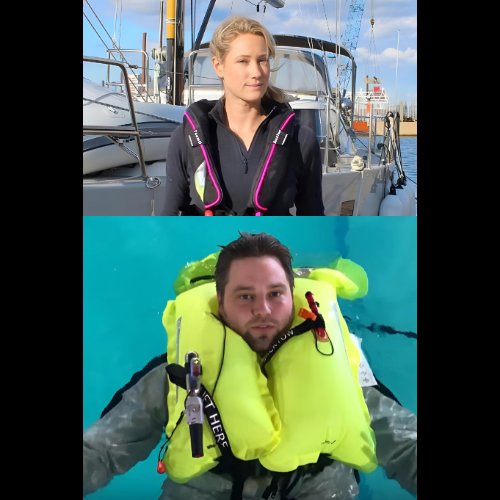
About TeamO
TeamO Marine is a UK family business founded by siblings Oscar and Lauren Mead, both lifelong sailors.
The idea for their patented BackTow™ system came after a sailor drowned in 2011 when he was dragged face-down while tethered. Knowing of other similar tragedies, Oscar set out to design something safer.
After years of design, testing, and refinement, TeamO began selling the world’s first BackTow™ lifejacket in 2017. Every jacket is still made in the UK, combining comfort with life-saving innovation.
“I’ve never heard of them. You say these are great, but does anyone else?”
-
Although still new in the U.S., TeamO has made a big impact worldwide:
- Twice recognized with the Sail Magazine Pittman Innovation Award (2014 and 2018).
- Prince William and Princess Kate wore TeamO lifejackets in the 2019 King’s Cup regatta at Cowes. You know no one is going to gamble with their safety!
- The Maiden Factor Project chose TeamO as their official lifejacket supplier for their global voyage promoting education for women and girls.
- Popular cruising YouTubers Dan and Kika of Sailing Uma sail with TeamO.
- Featured in Yachting Monthly, Yachts & Yachting, Yachting World, Sailing Today, Practical Boat Owner, Sail Magazine, Zeilen Magazine, and ScuttleButt, among others.
TeamO PFDs are now sold in 8 countries worldwide. From weekend sailors to professional crews and global campaigns, TeamO is proving itself as the next generation of serious marine safety gear.

